During my search for solutions to make photography lighter/easier or to create greater stability without adding much bulk or weight, I came across this small rifle-like chest support. It was originally designed to support long and heavy Novoflex telephoto lenses from the analog era, but conveniently, it is also usable for digital setups. Its compactness and light weight, while still providing reasonable stability, are its main advantages.
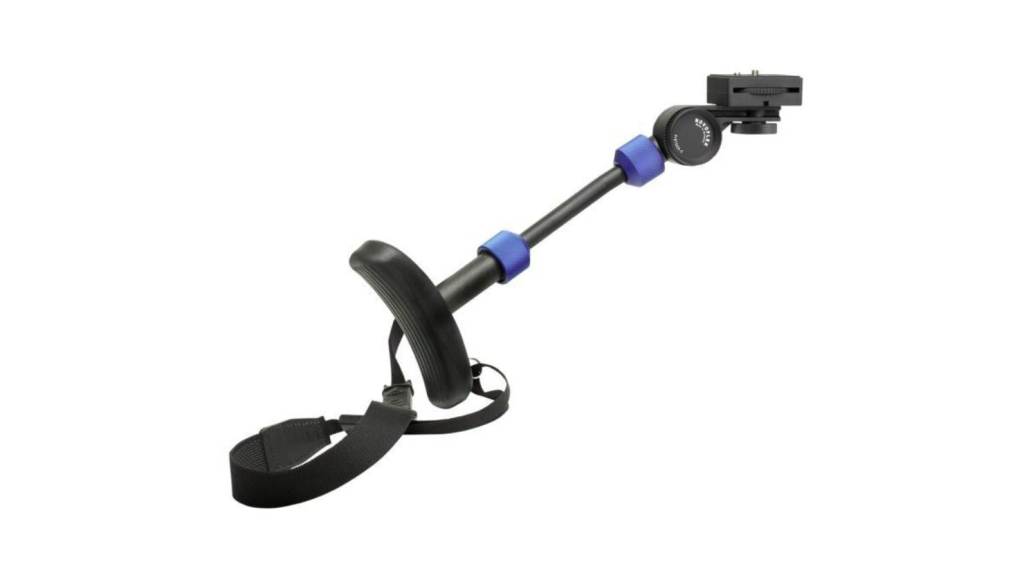
Novoflex Factory specifications :
The Novoflex Pistock C is an innovative and lightweight alternative to traditional gimbals for modern digital cameras, specifically designed to provide stability when using long Novoflex lenses. Weighing just 450g (1 lb) and measuring 11.4×11.8 inches (29×30 cm), it’s perfect for dynamic shooting scenarios where monopods and tripods might be impractical or prohibited.
This multi-purpose chest support begins as a comfortable neck strap, transitioning into a wide rubberized base that rests on your chest. An attached arm features a swiveling plate with a 1/4″-20 screw for easy attachment to your lens’s tripod collar. For medium fast telephoto lenses, such as the 85mm f/1.2 or f/1.4, you can attach it to the camera’s bottom, creating a stable triangle of vibration-reducing support.
The Pistock C can be used alone or in conjunction with a quick release adapter, allowing for swift switching between equipment. Its lightweight construction and intuitive design make it ideal for capturing sharp images in environments where tripods are restricted, enhancing mobility without sacrificing stability. This makes the Novoflex Pistock C an excellent choice for anyone looking to elevate their photography experience.
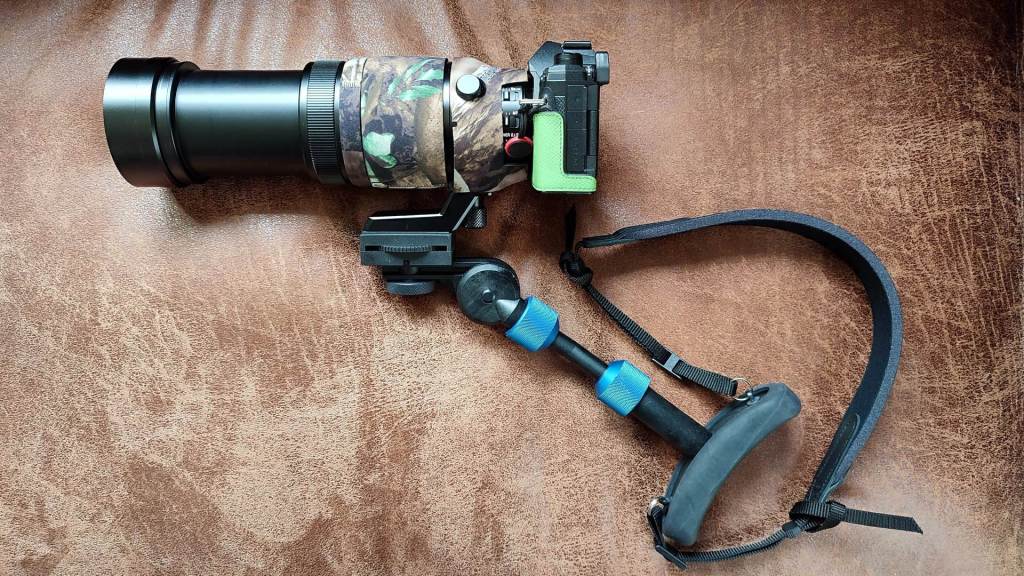
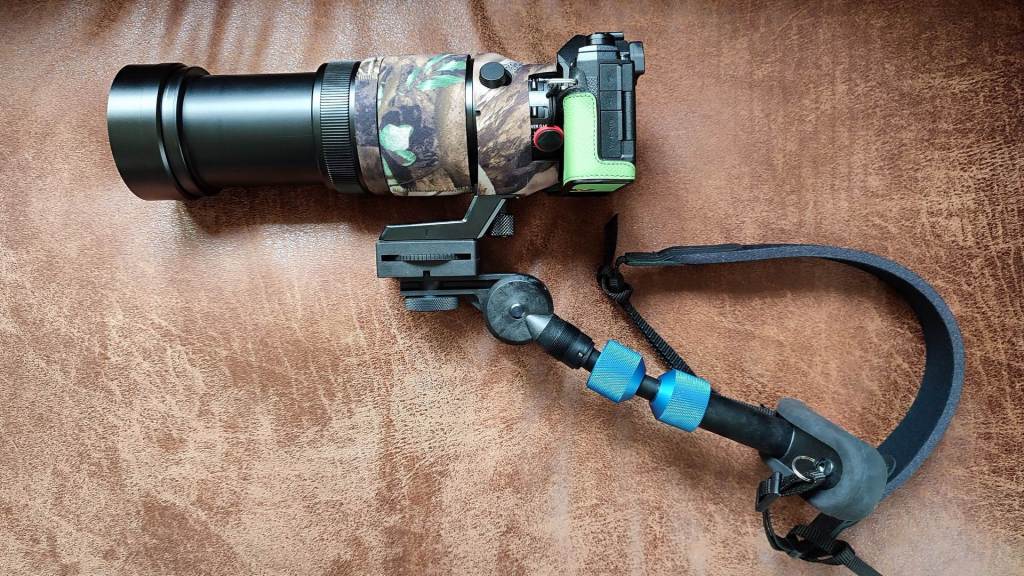
Personal experience :
More than a tripod or monopod, this rifle stock-like support provides stability for photography and, even more so, for video making when needed. Its advantage lies in its small size and its ability to be adjusted (within limits) to suit your needs. You can simply leave it attached without it getting in the way—unlike tripods, which you often need to detach – The keyword here is ‘Being Mobile’ !
The stock section, which includes the rubber support, can be adjusted to either a vertical or horizontal position, depending on your preference. Also, the angle between the rifle stock and the camera/lens combination can easily be adjusted with a rotary knob. The metal rod that connects the stock to the mounting plate is extendable and can be adjusted to fit the length of your arm. Additionally, the rod has a slight bend in the middle, which can be rotated upwards, downwards, inwards, or outwards to suit your needs.
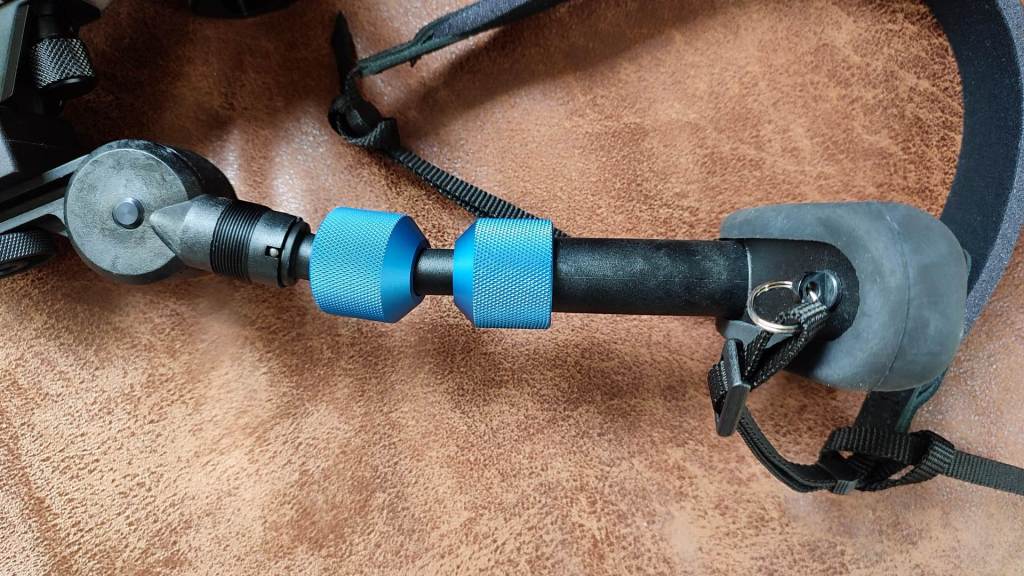
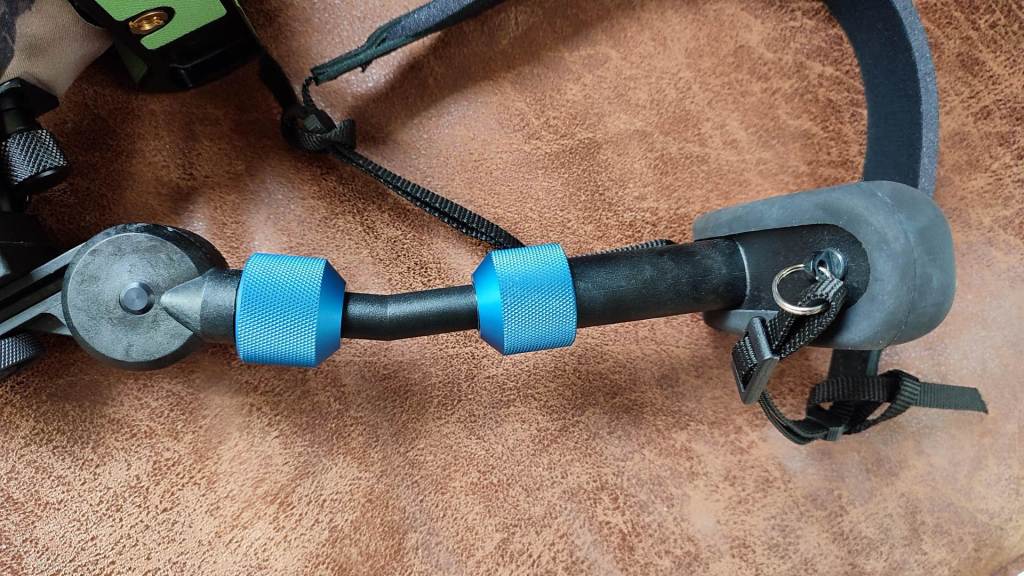

In summary, this is a small and lightweight tool with a surprising number of adjustment options.
Personally, I find it especially useful when I want to photograph or film for extended periods without tiring my arms. It also helps me capture steady footage with minimal movement.
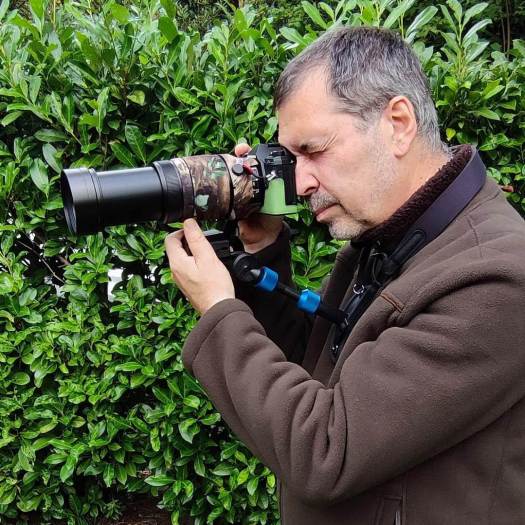
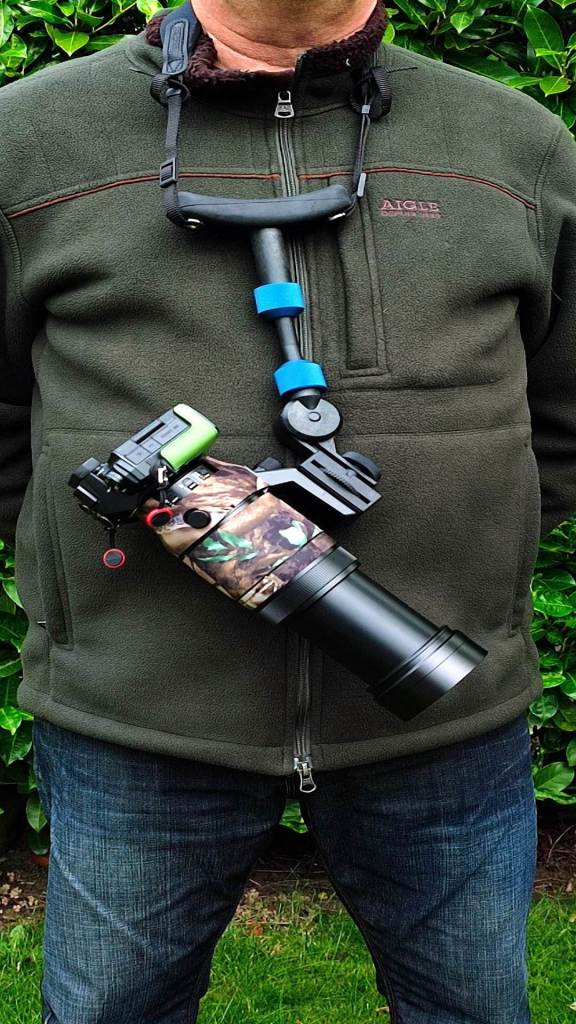
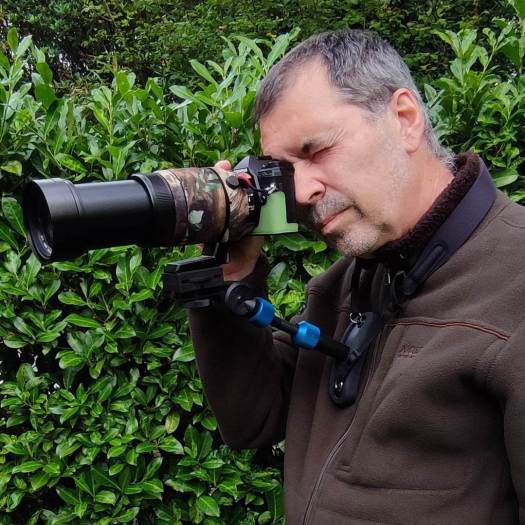
The price is comparable to that of an inexpensive tripod or monopod. The new price is (was) $200, but nowadays you can find them on various second-hand sites like eBay for half or less. I bought my support for slightly more, at €139, because it was still brandnew in the box and I found the price acceptable for this handy support tool.
Article Update – December 24
A reader asked about the mounting plate used to attach a lens or camera to a shoulder rig. Here’s a detailed explanation:
At the bottom of the shoulder rig, the mounting plate features a toothed, round screw approximately 30mm in diameter. This screw also has an internal thread, but it’s sized at 3/8″. To adapt it for 1/4″ accessories, small adapters are available.
This setup allows you to attach additional support, such as a handle or even a monopod, for improved stability.
The three photos below show the top, side, and underside of the plate, providing a clearer view of what I mean.
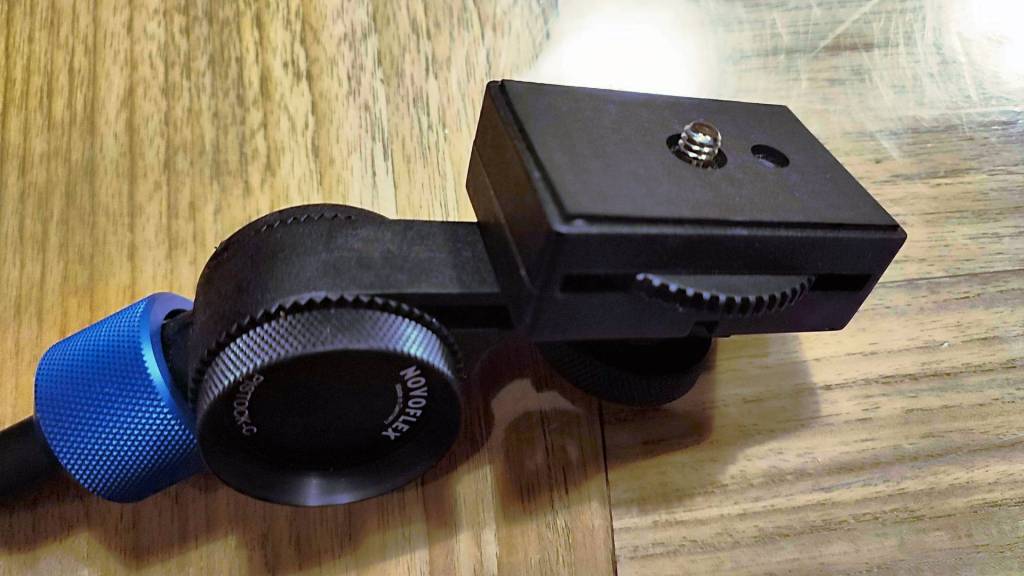
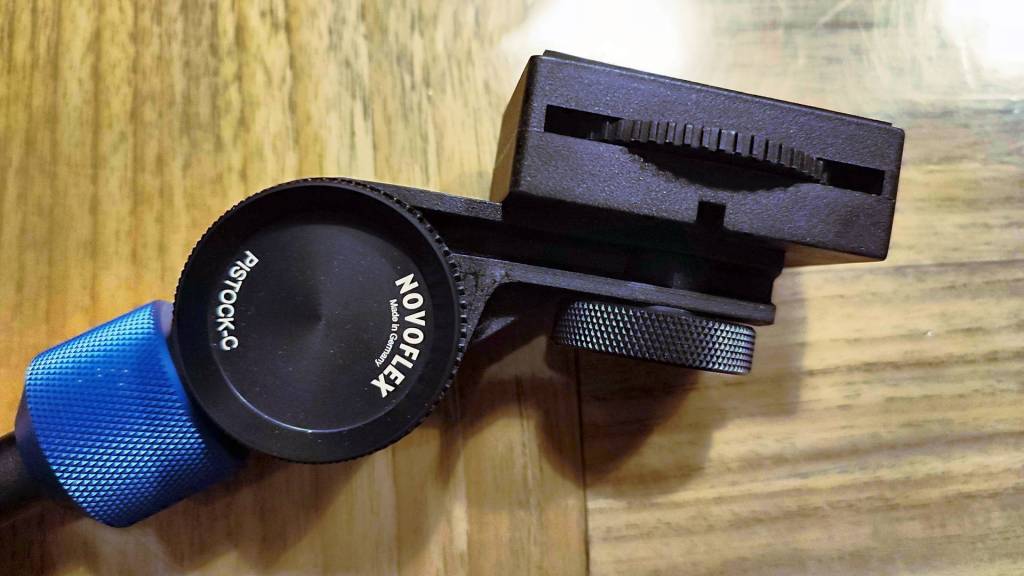
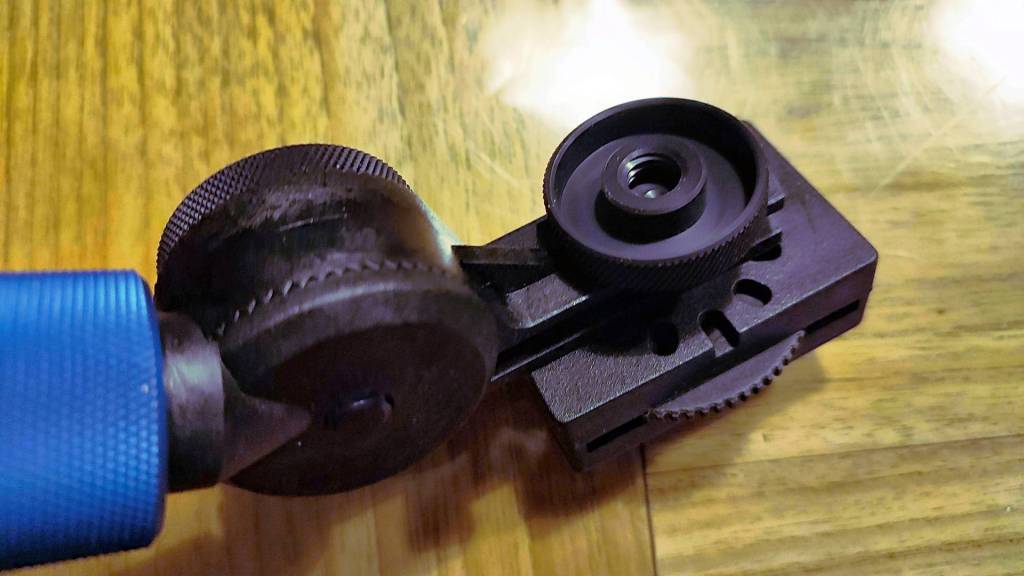
Conclusion:
A tripod can be useful in some cases or even indispensable, such as in astrophotography. However, when it comes to maintaining mobility, like in bird and wildlife photography, this accessory is a must-have tool. It can remain mounted, is small, and weighs very little. In return, you get a highly stable support for a relatively low cost.
I don’t have any Sponsoring Companies, Patreon support, or Follower Donations.
I don’t drink Coffee, well, I do … but not the financial form you sometimes find on other websites, like ‘buy me a coffee’ 😊
However, what I truly need to keep going is Motivation, and the best part is, it won’t cost you a thing. You can offer it for free – just hit the Like button and Subscribe !
This article was written by Marc R.
While I primarily speak Dutch and have some knowledge of English and a little French, ChatGPT helps ensure my writing is grammatically correct. I often mix Dutch and English in my drafts, and ChatGPT steps in to translate and correct.
Discover more from Open Source Photography
Subscribe to get the latest posts sent to your email.


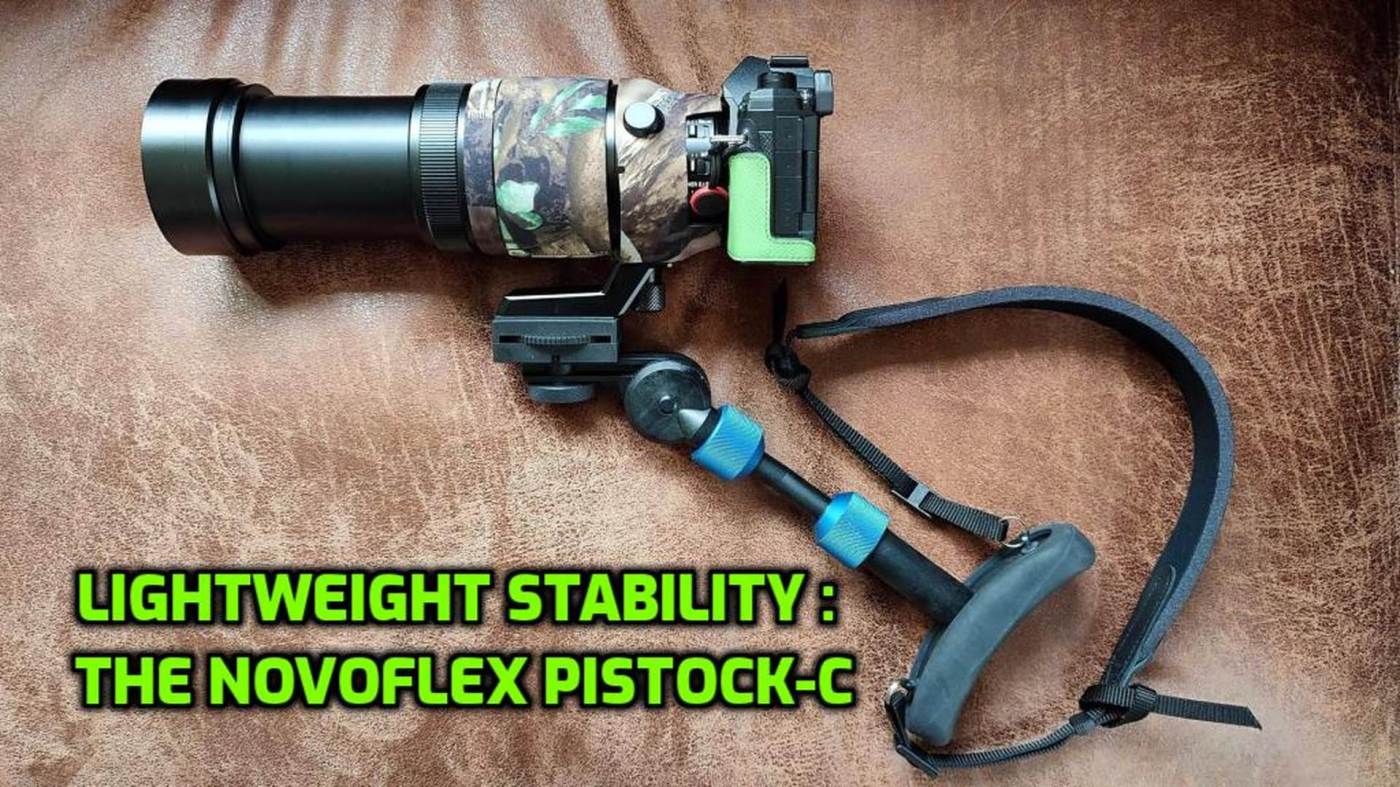

I need to check these further. Once again..thanks for doing all the heavy lifting.
LikeLiked by 1 person
Hey Ted, the pleasure is all mine. Ultimately, I do this for myself since I use it as well. It would be a missed opportunity not to share my experiences and insights, as it might help someone. All the best ! Marc.
LikeLiked by 1 person
My only thought on this is could the setup be confused with a person having, and pointing, a rifle. That would not be good around here in some circumstances.
LikeLiked by 1 person
I understand your concerns, Ted. Here in Belgium, we generally don’t have those kind of issues, so I didn’t think about it actually.
LikeLiked by 1 person
A bit more civilized over there. OK, a hell of a lot more…
LikeLiked by 1 person
Not sure I’d want to walk near the local military bases with one of these!
LikeLiked by 1 person
Hey James,
It’s best to avoid photographing in such locations in the first place. A while ago, I almost lost my camera while taking pictures of old horse stables from the early 1900s, it turned out I was on military grounds by accident. Fortunately, I got away with just a warning.
Take care, and have a great weekend!
Marc
LikeLike
Hello Marc, I just ran across your review of the Novoflex Pistock-C and appreciate you making the time to bring up the issue of stability when shooting with long focal length lenses without the use of a tripod.
Question regarding the round, knurled screw under the front of the Pistock-C: is there, by any chance, a 1/4-20 screw hole in this knurled screw? I ask because if there is a 1/4-20 threaded hole I could attach a monopod as additional support when using the 100-400 Olympus lens with the 2X teleconverter. With up to 1600mm of effective 35mm full frame equivalent focal length it would be nice to be able to attach a monopod under the Pistock-C for additional support.
LikeLiked by 1 person
Hello Leicaman!
The screw at the bottom of the mounting plate does indeed have internal threading, though it’s 3/8″. Luckily, there are small adapters available that you can screw in to make it compatible. I’ve updated the article with three photos of the specific mounting plate—on the last one, you can clearly see the internal threading.
I hope this helps! If you’re considering purchasing the Pistock C, make sure your version has the same feature. Novoflex has produced several variations, and I’m not certain if they all include this design.
Thanks for your comment, and I hope to see you back here soon!
Best regards,
Marc
LikeLike
Thank you for your quick reply, Marc. I found a used Pistock-C in Europe and will need to confirm the 3/8″ threading on the bottom of the mounting plate prior to purchasing.
I have an ancient Novoflex shoulder stock that came with my Leica 400 and 560 Telyt lenses that I never used with the Telyts as I was using the Telyt’s while shooting film with Leica R cameras. And of course there was no such thing as in-body image stabilization with those cameras, so I always used a metal Gitzo Series 5 tripod with an Arca B1 ball head for stability.
The Pistock-C appears to be an improved design and more comfortable, so if this used Pistock-C has the threading it could be a practical solution. In any event, I can adapt my Novoflex shoulder mount to my monopod so I’ll do some tests with the 100-400 with the 1.4TC while shooting hummingbirds to see if this provides sharp results. I still shot with a tripod, so the shoulder mount will make it possible to move around without having to drag my carbon fiber tripod around.
LikeLike
You’re welcome, Leicaman! I’m guessing you’re now using the Telyts with a Leica SL camera? Either way, I wish you all the best with your new setup. Keep us updated on how things turn out after you’ve done your tests with the new gear.
Thanks in advance for sharing your experience!
Best regards,
Marc
LikeLike
Hi Marc, The Leica DMR was the last Leica camera I used. I still have the 180, 280 and 400 2.8 APO lenses but since making the switch to Olympus those lenses sit unused. I’ve been shooting with the OM-1 Mk2 and the 100-400 Olympus lens with and without the 1.4 and 2X teleconverters. It has completely transformed my photography as the results I’m getting are superior to anything I’ve ever seen from any camera system.
Being someone who shot and processed my own black and white and color film for more than 30 years, and printed Cibachromes with the Leica V35 Focomat enlarger, I am amazed at the results I’m getting when using extreme iso’s (as high as 25,600 iso) when processing the Raw files with Adobe Camera Raw.
Few subjects have detail as fine as a hummingbird feather, so being able to see no detail in an extremely high iso file completely transformed by Adobe Camera Raw is something I never expected to see in my life. Until now I only shot once at 3200 iso, fearing the loss of fine detail. Now I have no reservations at shooting images above 12,800 iso.
Thanks to your article on the Pistock-C I can now leave the tripod at home and be free to move around with the Pistock-C and a monopod when extreme focal lengths are used.
LikeLiked by 1 person